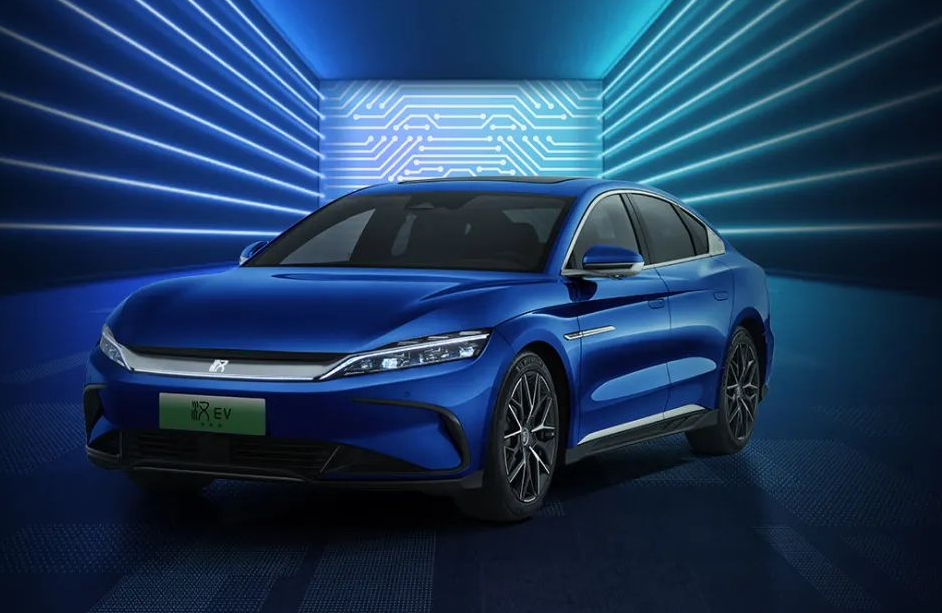BYD’s new Han family officially goes on sale with the price range of CNY 215,800 to CNY 329,800
As the flagship model of BYD, the all-new Han family was officially launched on April 10. The official guidance price ranges from CNY 215,800 to CNY 329,800, approximately CNY 1,000 to CNY 3,000 cheaper than the pre-sale price. The Han family consists of three powertrains, namely Han EV, Han DM-i, and Han DM-p, with nine models available on the market.
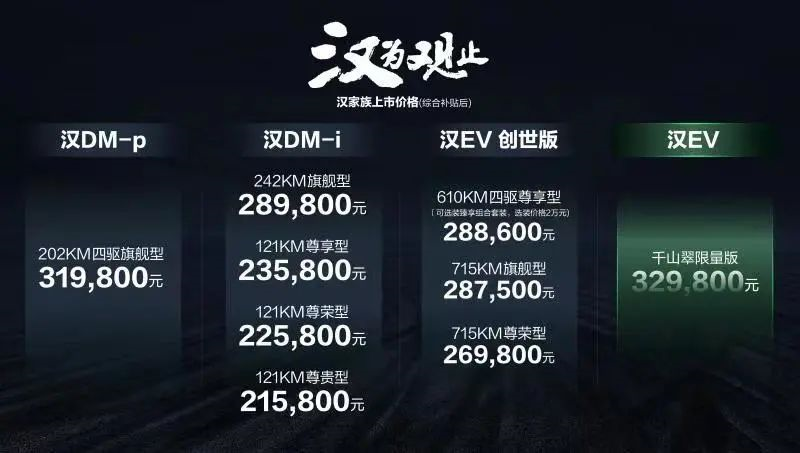
In terms of appearance, the new Han family has undergone minor adjustments. The “Dragon Face” design concept is still used for the front face with a new design for the front bumper of Han EV, which enhances the sporty perception. The front face of Han DM has changed with larger openings on both sides and matching with a large-mouthed scale-like grille, making the car more ferocious.
Regarding the rear, the main changes lie in the taillights, which are now woven in the traditional Chinese knot style. The curve of the rear has also become more streamlined and rounder, making the car more dynamic than the previous boxy styling. For more specific changes, you can refer back to our static experience video that we recorded previously.
For the Han family, the biggest highlight is the introduction of the DM-i super hybrid system. Han DM-i and Han DM-p both use the 1.5T turbocharged engine that is dedicated to plug-in hybrids, with a maximum horsepower of 139Ps and peak torque of 231N·m. The DM-i model is equipped with a front-mounted single motor, and the 121km extended version has a maximum horsepower of 197Ps. The top-of-the-line 242km extended version has a maximum horsepower of 218Ps. Both models have an acceleration of 7.9s per 100km, with an energy consumption of only 4.2L/100km, and a maximum cruising range of 1,300km. Both models are equipped with BYD’s blade battery pack with a capacity of 18.3kWh and 37.5kWh, respectively, which supports fast charging of 40kW and 80kW.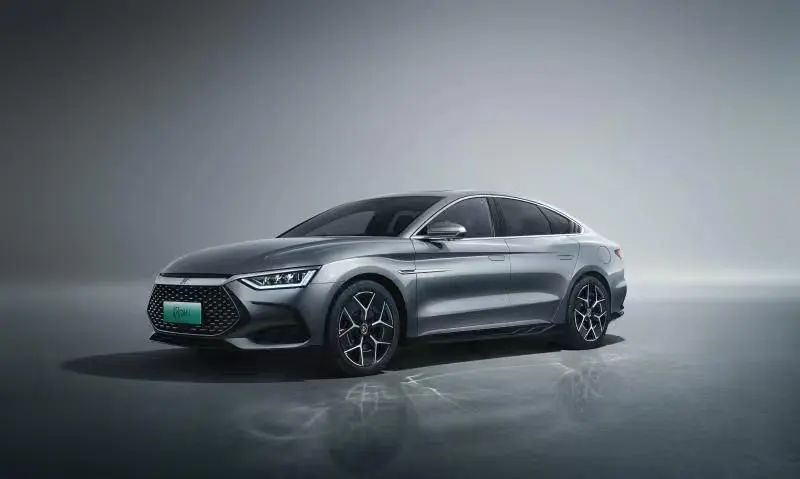
Here is a piece of advice for those who are considering purchasing DM-i: if your budget allows, do not choose the entry-level version as the waiting time is extremely long and it lacks features such as Denon sound system, seat ventilation and heating, seat memory, and lumbar support. The cost-performance ratio is not great when compared to the mid-range version, which is only 10,000 yuan more expensive. As for the mid-to-high-range versions, it depends on your preference for features.
On the other hand, the DM-p version, which is focused on performance, is equipped with front and rear dual-drive electric motors. The maximum horsepower of the front motor is 218 Ps, with a peak torque of 325 N•m, while the maximum horsepower of the rear motor is 272 Ps, with a peak torque of 350 N•m. It also comes with Brembo four-piston calipers and an electronically controlled active suspension. The Han DM-p can accelerate from 0 to 100 km/h in 3.7 seconds, which still stands out in the BYD family. Similar to the top-of-the-line version of DM-i, DM-p comes with a 37.5 kWh blade battery pack, and can achieve an NEDC range of 202 km. Unlike most hybrid models that “drive like a dream with electricity, and like a dog without it,” the BYD Han DM-p’s fuel consumption when its battery is depleted is only 5.2 L per 100 km, and it supports 80 kW fast charging.
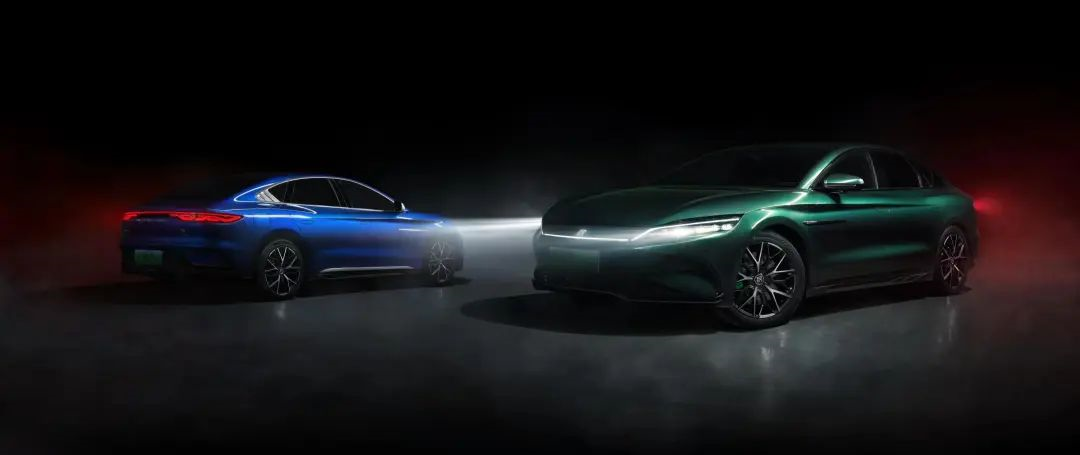
The Han EV’s basic version now has a range of 715 km, while the four-wheel drive top-of-the-line version’s range is 610 km. All models are eligible for a car purchase subsidy of up to 300,000 yuan, and even the basic version is equipped with features such as 120 kW fast charging, HUD head-up display, 11 airbags, and heat pump air conditioning, making it a highly practical option.
In addition to the Han EV, a limited edition called “Qian Shan Cui” has been released. The unique dark green car paint looks somewhat blue-purple in dim light, adding a sense of distinctiveness. Plenty of sporty elements have been added to the entire vehicle to emphasize its sporty nature, such as the black badges and wheels, green calipers, integrated sporty seats, and suede steering wheel, which feel quite nice to the touch.
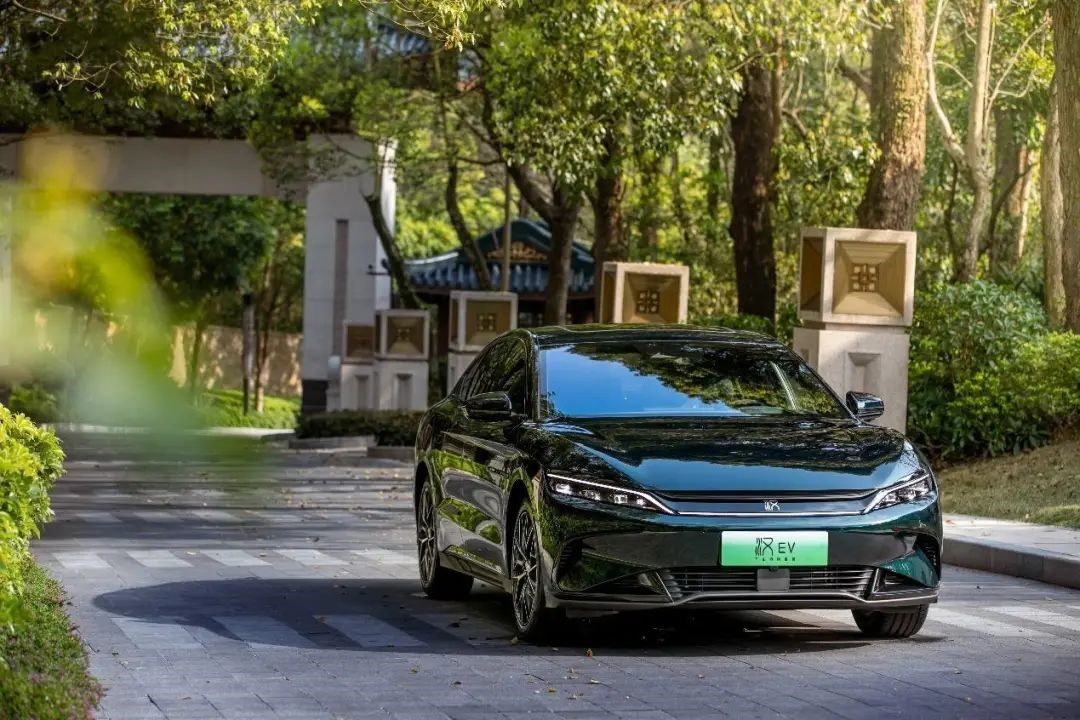 With the introduction of DM-i, BYD Han series’ product lineup has been formed, and there has been impressive improvements in both intelligence and power compared to the previous model. Although the DM-i 242km version with extended range looks attractive, the prices have also gone up. I believe that it is more of a show-off existence by BYD. The EV version is relatively expensive, and the more economical DM series may be the key to the highest sales volume of the BYD Han for most consumers.
With the introduction of DM-i, BYD Han series’ product lineup has been formed, and there has been impressive improvements in both intelligence and power compared to the previous model. Although the DM-i 242km version with extended range looks attractive, the prices have also gone up. I believe that it is more of a show-off existence by BYD. The EV version is relatively expensive, and the more economical DM series may be the key to the highest sales volume of the BYD Han for most consumers.
As of the deadline, it is reported that the total orders for the Han series have exceeded 50,000 units. At the launch event, BYD officially announced that the sales of BYD Han has exceeded those of Mercedes-Benz E-Class, BMW 5 Series, and Audi A6. Although the prices are not comparable, considering the level, BYD Han has indeed achieved remarkable results, and is the first domestic brand to break through in the mid-to-large-size sedan market.
If the market response is as predicted by BYD, as the first to implement “no combustion” technology, BYD not only stands up, but also moves forward at a running pace. With BYD’s increased production capacity, BYD Han may become the first domestic brand with a mid-to-large size sedan whose sales are close to or even surpass the total of BBA models. Who could have imagined this ten years ago?
This article is a translation by ChatGPT of a Chinese report from 42HOW. If you have any questions about it, please email bd@42how.com.
